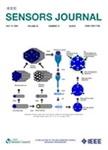版权所有:内蒙古大学图书馆 技术提供:维普资讯• 智图
内蒙古自治区呼和浩特市赛罕区大学西街235号 邮编: 010021

作者机构:Shanghai Jiao Tong Univ Sch Elect Informat & Elect Engn Shanghai 200240 Peoples R China China Southern Power Grid Digital Grid Res Inst Guangzhou 510000 Peoples R China
出 版 物:《IEEE SENSORS JOURNAL》 (IEEE Sensors J.)
年 卷 期:2025年第25卷第4期
页 面:7095-7106页
核心收录:
学科分类:0808[工学-电气工程] 08[工学] 0804[工学-仪器科学与技术] 0702[理学-物理学]
基 金:Grid Digital Grid Research Institute [210000KK52220017]
主 题:Electric fields Sensors Testing Strain measurement Electric variables measurement Sensor systems Optical sensors Linearity Sensitivity High dynamic range DC testing electric field sensor (E-sensor) high linearity large dynamic range piezoelectric-piezoresistive (PE-PR) coupling
摘 要:The electric field intensity is a critical parameter in electrical power systems, providing significant insights into the system s condition. Electric field sensors (E-sensors) are essential for monitoring variations in electric field strength. The current challenge facing E-sensors is to achieve the detection of dc electric fields while ensuring a wide dynamic range of field strengths. This article proposes a novel E-sensor that combines piezoelectric-piezoresistive (PE-PR) elements in its sensitive structure. This article proposes a novel E-sensor that combines PE-PR elements in its sensitive structure. Shielding plates are positioned on both the upper and lower sides of the PE-PR sensitive element. The conductive states of the two shield plates are controlled through a switching circuit, enabling the modulation and testing of dc electric fields. This design overcomes the incompatibility between dc electric field testing and a wide dynamic range of electric field strengths in E-sensors. This passive sensor can perform electric field measurements within a dc-1.5-kHz bandwidth from 0 to 150 kV/m, with a linearity of less than 0.92%, a field resolution up to 50 V/m, sensitivity reaching 1.06 mV/kV/m (@ 1500 Hz), 128 mV/kV/m (@ dc), and hysteresis error less than 2%. The specifications can be customized according to requirements. Compared to existing research, this E-sensor meets basic measurement requirements and offers the advantages of a simplified fabrication process and smaller dimensions. The relatively small sensor allows for integration into most power electrical equipment.